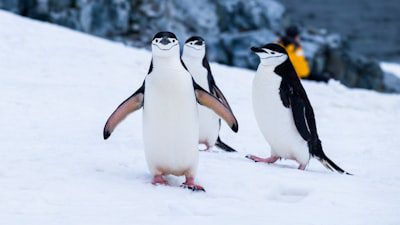
Emerging research shows that the humble guano of Adélie penguins—far more than a foul-smelling by-product—may play a surprising role in regulating cloud cover in Antarctica. Scientists have found that nitrogen-rich droppings generate ammonia emissions that interact with marine compounds to seed the formation of tiny aerosol particles, promoting cloud creation and potentially cooling regional temperatures.
Adélie penguins feed primarily on fish and krill, producing guano rich in nitrogen. As this waste breaks down, volatile ammonia is released into the atmosphere. When ammonia encounters sulfur gases emitted by oceanic plankton, it triggers new particle formation (NPF)—a process that acts like a cloud nursery, providing condensation nuclei essential for droplet formation
Between January 10 and March 20, 2023, researchers stationed at Argentina’s Marambio Base—roughly 8 km from a colony of 60,000 Adélie penguins—recorded ammonia levels up to 13.5 parts per billion when winds blew from the colony direction—over 1,000 times the typical background concentration : Even after the penguins migrated away, the guano-enriched soil continued emitting ammonia at levels more than 100 times higher than baseline for several weeks
Shortly after spikes in ammonia, researchers observed abrupt increases in aerosol particle counts and even low-lying fog forming within hours. This sequence confirmed that guano-derived ammonia—and associated dimethylamine—boosts particle formation rates by up to 10,000-fold, accelerating cloud generation in the otherwise pristine polar atmosphere
While these biologically seeded clouds likely reflect incoming sunlight—implying a regional cooling effect—scientists remain cautious. Over Antarctica’s reflective ice surfaces, clouds may also trap outgoing heat. Initial modeling and Arctic analog studies suggest a net cooling outcome, but further observational data are needed to confirm whether local cloud cover from penguins truly mitigates climate warming
A complementary study examined the impact of freeze-thaw cycles on guano emissions. They found that thawing soils trigger sudden ammonia releases—up to 20 times more—resulting in a total seasonal emission of nearly 49 Gg nitrogen from penguins across Antarctica. These emissions elevated new particle concentrations by 30–300%, increased cloud droplet numbers by up to 20%, underscoring the nonlinear link between penguin biology and atmospheric chemistry
In Antarctica—one of the planet’s most isolated and clean environments—natural aerosol sources are scarce. Penguin colonies emerge as critical hotspots of ammonia, often rivaling even agricultural emissions in strength during summer. Their guano-derived gases initiate particle formation in a region where clouds are otherwise rare :
This research offers two important insights: first, that ecosystem-atmosphere interactions in Antarctica are far richer and more dynamic than previously understood; second, that penguin population shifts—driven by warming, sea-ice loss, and habitat change—may feed back into climate processes. As some penguin colonies decline, cloud-seeding capacity could diminish, weakening these natural climate buffers
Most global climate models underrepresent biological gaseous inputs like ammonia and dimethylamine. The new findings stress the necessity of integrating seabird emissions into simulations—especially in polar regions—to refine predictions of cloud formation, albedo shifts, and radiative balance
Further field campaigns are planned to validate the observed cloud effects under varying seasonal and climatic conditions. Scientists aim to quantify whether biologically seeded clouds exert significant cooling—or in some contexts, trapping—over Antarctica’s complex terrain. With penguin populations shifting regionally, future studies will also map how these changes alter atmospheric chemistry over time
Adélie penguins, through their droppings, appear to play an unexpected yet pivotal role in Antarctic climate dynamics. Their guano emits ammonia that seeds aerosol particles, producing clouds that may reflect sunlight and cool surface temperatures. In a region with minimal pollution and unusual atmospheric behavior, these findings reveal nature-driven climate processes we’re only beginning to understand.
As temperatures rise and penguin habitats change, these biological cloud seeds could become even more critical—or diminish entirely. Acknowledging this connection enriches our understanding of Earth’s climate system and strengthens scientific efforts to model the intricate balance between biology and weather in the planet’s most remote regions.
for more news visit our website africapulsemedia.com